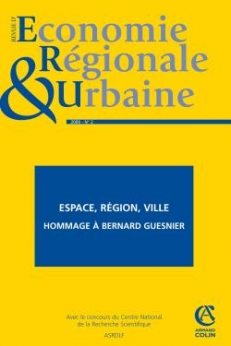
Revue d'économie régionale & urbaine (2/2009)
Pour acheter ce numéro, contactez-nous
Recevez les numéros de l'année en cours et accédez à l'intégralité des articles en ligne.
Ce travail a pour objectif d’illustrer l’apport de la théorie économique et des méthodes économétriques, plus particulièrement l’économétrie spatiale, à la conception et à l’évaluation d’opérations de renouvellement urbain. Dans ce but, l’approche par les prix hédoniques est retenue. Elle procède en deux temps. Dans un premier temps, sont identifiées, parmi un ensemble de caractéristiques delocalisation données a priori,celles qui exercent un rôle discriminant sur la valeur des logements. Dans un second temps, les consentements à payer des habitants pour une amélioration des caractéristiques discriminantes sont calculés. L’application aux mutations d’appartements à Rennes entre les années 1994 et 2001 montre qu’il existe des externalités de voisinage significatives qui justifient une intervention publique. Les consentements à payer pour une amélioration des caractéristiques environnementales discriminantes apparaissent assez hétérogènes entre individus et variables d’une caractéristique à l’autre.
This article intends to illustrate the contribution of economic theory and econometric methods, more specifically spatial econometrics, to the efficient design and evaluation of urban restructuring programs. For this purpose, we make use of a two stages approach based on hedonic prices. The first stage consists in the identification of the most discriminating features of housing in terms of market value among a set of a priori candidates. In a second stage, the willingness to pay of the inhabitants for an improvement of these characteristics is assessed. The case of housing transactions in the city of Rennes from years 1994 to 2001 isused for illustrative purpose. Empirical results highlight that there exists significant neighborhood externalities that justify government action. The willingness to pay for an improvement of discriminating environmental characteristics is somewhat heterogeneous across individuals and varies from one characteristic to another.